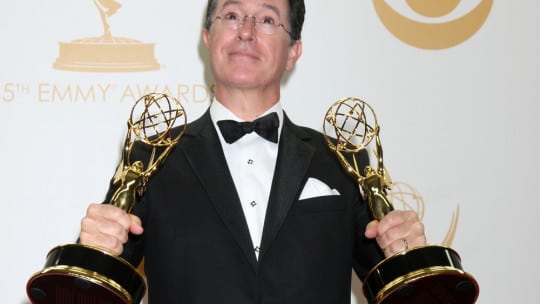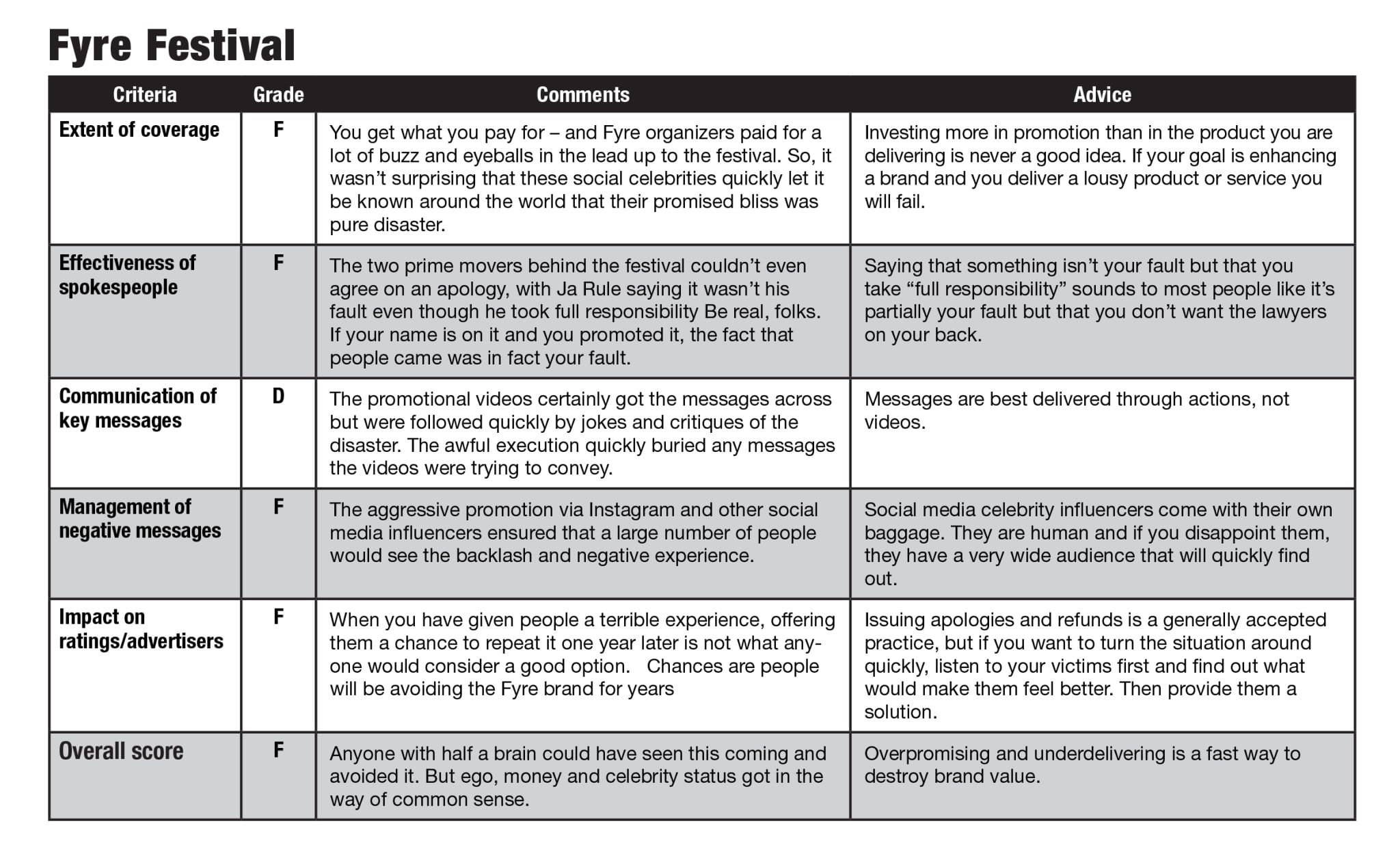

Lord knows we don’t have to look far these days to find examples of people and organizations screwing up. So as tempting as it may be to pile onto Uber’s woes or the latest airline mess [see The Week in PR], we wanted to focus on the follow-up. What you do is very important, but so is how you respond, ie, the way people and brands say they’re sorry – or don’t.
First a tip of the hat to Josh Bernoff, who writes a wonderful daily blog called Without Bullshit (withoutbullshit.com). His examples of apology letters are models we can all learn from and use. If you can’t figure it out from the name, Bernoff is an advocate for plain speaking.
What I like most about his advice is that he urges us to say what we know we want to hear and what needs to be said. We’ve all seen corporate apologies so full of lawyer-induced double speak and passive tense obfuscation that even my cat knows they’re BS.
Fyre Festival
This brings us to the Fyre Festival -- an overhyped event set on an obscure island in the Bahamas that left hundreds of attendees who had paid thousands of dollars for tickets stranded with little food and fewer facilities.
Anyone seeing Fyre’s promotional slide deck (assuming the viewer was drug-free and sober at the time) should have at least suspected something based on the verbiage.
The ultimate irony was that concert organizers had paid Instagraminfluencershundreds of thousands of dollars to hype the festival. So, followers of the Instagram accounts of models/influencers such as Kendall Jenner, Bella Hadid and Emily Ratajkowski were enticed with pictures of gorgeous beaches and luxurious accommodations. Upon arrival they found blown-down FEMA tents and cheese sandwiches.
The concert was cancelled quickly and all those attendees, armed with mobile phones and Instagram accounts, were more than happy to post photos of the disaster on social media.
The resulting publicity guaranteed that the Fyre brand, an entertainment-booking platform, would become the butt of every comedy show and podcast in at least the Western Hemisphere. The image of wealthy millennials getting stiffed was just too tempting to resist.
And festival organizers made the entire situation worse by waiting days before offering an apology that was just as convoluted and full of hype as the initial promotional video.
Phrases used included “it’s not my fault” and “due to circumstances out of our control….” Organizers added fuel to the fire (pun intended) by allegedly sending cease-and-desist orders to attendees to take down their social media posts. The reason given: They could “incite violence, rioting or civil unrest…if someone innocent does get hurt Fyre Festival will hold you accountable and responsible.”
As I write this, there are at least seven separate lawsuits that have been filed against Fyre.

Stephen Colbert and The Late Show
For months Colbert’s The Late Show has dominated late night with its harsh critiques of the new presidential administration in Washington, D.C. But when President Trump insulted Colbert’s friend, CBS News political director John Dickerson, the entertainer decided it was time to respond with the best weapon he had: Humor.
Colbert launched into a series of insults aimed at the president, one of which was considered by some to be over the top. This tit-for-tat was too much for some on social media who retorted quickly by launching a #firecolbert hashtag and calling for an FCC investigation, accusing Colbert of homophobia because his rant included a reference to homosexual sex between Trump and Russian leader Vladimir Putin.
Not a big surprise that news outlets and social media picked up the kerfuffle and magnified it. For two days there was no response from CBS or Colbert.
Then Colbert addressed the controversy during his show’s opening monologue, doubling down on his comments. When the president retorted, Colbert got what he’d wanted for years – a presidential response. “Yayyy!” he giggled. “Mr. Trump, don’t you know I’ve been trying for a year to get you to say my name? But now you did it! I won!”

The Goals and Takeaways
There is a lesson here for all of us: Keep the end goal and the target audience top of mind at all times.
For the Fyre Festival, the goal was to enhance the brand, which would only be accomplished by giving attendees a great experience. Instead Fyre spent money, probably a great deal of it, on promotion and gaining eyeballs so when experience time arrived, there was nothing left in the budget to deliver on what had been promised.
For Colbert, the goals were to please his audience, grow his show’s Nielsen ratings and gain the satisfaction of knowing that POTUS was paying attention. And he manipulated the president and his followers into delivering exactly what he wanted.
CONTACT: [email protected]
